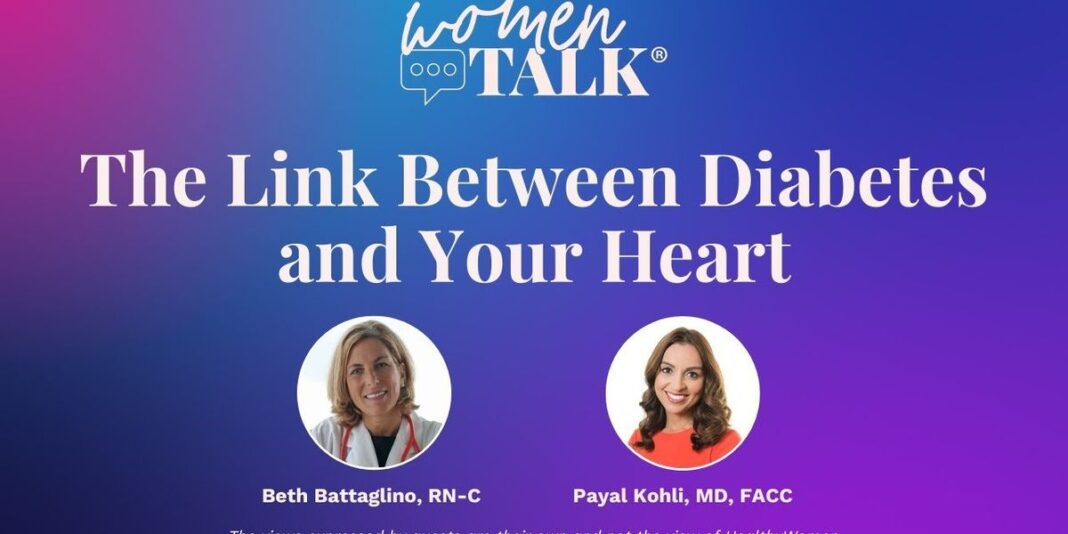
Schizophrenia is among the leading causes of years lived with disability worldwide and is associated with decreased life expectancy (Hjorthoj C. et al, 2017). It encompasses positive symptoms, negative symptoms and cognitive impairment (Shafer A. et al, 2019). While positive symptoms (mainly hallucinations and delusions), account for the most blatant manifestation of schizophrenia, negative symptoms (i.e. social withdrawal and emotional blunting) may appear first and persist between acute episodes. Cognitive symptoms such as memory and learning impairment are also persistent and lead to marked functional impairment (Juhar S. et al, 2022).
Antipsychotic medications are the benchmark for the treatment of schizophrenia (Keepers G. et al, 2020). All currently available antipsychotics act by reducing dopaminergic transmission. These medications show suboptimal efficacy, especially on negative and cognitive symptoms, and often cause motor and metabolic side effects (Huhn M. et al, 2019). Investigation of drugs tackling alternative mechanisms of action has been advocated.
Xanomeline is an agonist of muscarinic acetylcholine receptors, a family of G protein-coupled receptors (GPCRs) that are involved in many functions of the nervous system, initially developed as a pro-cognitive treatment for Alzheimer’s disease. Early serendipitous finding of its efficacy on psychotic symptoms sparked an interest into its potential as a treatment for schizophrenia (Shekar A. et al, 2008). Muscarinic receptors are found both in the brain and in peripheral organs, where they regulate many fundamental functions of the peripheral nervous system, including peristalsis. Therefore, Xanomeline shows peripheral side effects such as nausea, constipation and dry mouth, that initially hindered further investigation.
Combining Xanomeline with a peripheral antagonist (a chemical compound that binds to and blocks receptors outside of the central nervous system) might reverse adverse effects and is therefore worthy of investigation. Trospium is a peripheral antagonist of muscarinic receptors. Combining Xanomeline with trospium therefore allows for the antipsychotic effects of Xanomeline while reducing the toll of peripheral side effects (Breier A. et al, 2023). This approach was effective in early-stage trials where side effects were milder and bearable (Brannan S. et al, 2021). The results from the EMERGENT-2 trial, a new, phase 3, randomised controlled trial (RCT) on Xanomeline/Trospium (KarXT, also known as Cobenfy) recently appeared on The Lancet (Kaul I. et al, 2024a).

G protein-coupled receptors are involved in many functions of the nervous system.
Methods
Kaul and colleagues conducted a multi-site placebo-controlled randomised controlled trial on the efficacy of KarXT (a combination of xanomeline and trospium) in acutely ill, drug free patients with schizophrenia. Participants were recruited across 22 sites in the United States and randomised to either a flexible dose of KarXT (up to 125mg xanomeline and 30mg trospium twice daily) or placebo. Both participants and researchers were blind to the allocation, which reduces potential bias in the trial.
The primary outcome was change in Positive and Negative Syndrome Scale (PANSS) after 5 weeks of treatment. The PANSS is a standardised rating scale for schizophrenia symptoms and its score ranges from 30 to 210, where higher scores suggest worse symptoms. Responders were defined as participants experiencing a reduction of at least 30% from the baseline PANSS score. Secondary endpoints included change in PANSS subscales for positive and negative symptoms, reduction of Clinical Global Impression – Severity (CGI-S) score, and percentage of responders (defined as participants with >30% reduction on PANSS scale). Moreover, safety and tolerability were assessed, comparing incidence of adverse events between the two groups.
The analyses were conducted with a modified intention to treat (mITT) approach, including participants who had at least one dose of the allocated treatment and had one post-baseline PANSS score. Using mITT means that participants who do not initiate treatment and assessments will be excluded from the analysis.

Participants and researchers were blind to allocation, which reduces potential bias
Results
252 participants were enrolled in the trial, of which 236 received at least one dose and had at least one post-baseline PANSS assessment and were therefore included in analysis. The sample was predominantly composed by males (75%), and the most represented ethnicity was black or African American (75% of the mITT sample). The mean age of participants was 45.9 (SD 10.6), and they had an average baseline PANSS score of 98.1 (SD 9.3), which clinically corresponds to marked illness (Leucht S. et al, 2005).
The PANSS total score at week 5 was reduced by 21.2 (SD 1.7) points in the KarXT group, and by 11.6 (SD 1.6) in the placebo group. Both groups showed an improvement in psychotic symptoms, but with a difference of 9.6 points in favour of the KarXT group.
Participants receiving KarXT also showed a more marked improvement in PANSS positive symptoms and negative symtpoms subscales, and a 55% response rate, compared to 28% in the placebo group. All of the differences observed from primary and secondary outcomes were statistically significant.
Overall, 75% of participants receiving KarXT experienced at least one adverse event (AE) related to the medication, compared to 58% of participants in the placebo group. Most common AEs in the KarXT group were constipation (21% in KarXT group vs 10% in placebo group), dyspepsia (19% vs 8%), nausea (19% vs 6%), vomiting (14% vs 1%) and headache (14% vs 12%). The rates of severe AEs (2% vs 3%) and of AEs leading to discontinuation (7% vs 6%) were similar in the two groups.

KarXT reduced psychosis symptoms to a larger extent than placebo.
Conclusions
- The results presented by Kaul and colleagues suggest that KarXT is effective for the treatment of acute schizophrenia, confirming the results of previous trials.
- These data support the notion that coupling xanomeline with tropsium reduces its systemic side effects while preserving its antipsychotic properties.
- Muscarinic receptors could represent the first new target for the treatment of schizophrenia since the development of conventional antipsychotics in the 1950s.

Muscarinic receptors could represent the first new target for the treatment of schizophrenia since the development of conventional antipsychotics in the 1950s.
Strengths and limitations
The EMERGENT-2 trial validity is strengthened by its multi-site nature, the relatively large sample and the study methodology (double blind randomised trial).
On the other hand, a set of limitations must be considered when interpreting its results. All recruitment sites were in the USA, limiting the generalisability of findings to other parts of the world. Similar results have recently been published from the EMERGENT-3 trial (Kaul 2024), which was conducted across USA and Ukraine. Despite including European sites, participants enrolled in Ukraine accounted for less than 20% of the sample. The limited geographical heterogeneity in schizophrenia research have previously been highlighted (Alliende L. et al, 2022) and is considered an obstacle to the extrapolation of results to the wider population of patients.
Blinding participants to their allocation is critical to properly compare two treatments in an RCT. For the EMERGENT-2 trial, raters, statisticians and researchers were also blinded to further reduce bias. Nevertheless, authors did not report on the efficacy of blinding procedures. This is usually assessed by asking participants and assessors to guess allocations. Unsuccessful blinding can confound results and lead to bias, but assessment of blinding efficacy is rarely reported in clinical trials on mental health disorders (Lin Y. et al, 2022; Beathge C. et al, 2013).
The outcomes analysed are restricted to clinician-rated assessments of symptoms. While these are the mainstay for assessing the efficacy of psychiatric medications, patient reported outcomes correlate with overall disability and quality of life (Stefanatou P. et al, 2023). Including patient’s subjective evaluation as well as the assessment of functional performance would help when weighing up the truly relevant impact of the medication and its cost-benefit ratio (Correll C., 2020).
Moreover, the trial protocol originally mentioned other exploratory outcomes, including effects of KarXT on cognitive symptoms, which were not reported in the paper. Discrepancies between pre-specified protocols and reported outcomes are common in trials on psychiatric medications, including antipsychotics (Lancee M. et al, 2017). This can be due to underestimation of the importance of omitted outcomes, or to reluctance to publish negative results. This eventually reduces the reliability of trials as well as the inclusion of negative or non-significant results in meta-analyses (Hart B. et al, 2012).
All completed and ongoing studies on KarXT are sponsored by the developing company. RCTs on drugs are largely sponsored by manufacturers (Lathyris D. et al, 2010). Sponsored trials have been shown to yield favourable results more frequently, and conversely are more cited than investigator-initiated trials (Flacco M. et al, 2015). While this is an inevitable step in drug development, independent trials, or independent analyses of individual participant data from these trials, are needed to confirm the reported results.
Finally, in EMERGENT-2 the comparison with a “sugar pill” (i.e., inactive placebo) does not give information on whether KarXT can do better or worse than currently available treatments. All studies currently available on KarXT in schizophrenia used the same placebo-controlled design. Such trials are conducted almost exclusively to get regulatory approval and licence medications in USA and Europe, but their results do not inform clinicians and patients in real world practice, who are more interested to know which drug will work best and with least side effects (Cipriani A. et al, 2023). RCTs with active comparators should be prioritised and incentivised also after approval of new medications (Cipriani A. et al, 2020) and network meta-analyses should be used to fill this gap before head-to-head studies are available (Naci H. et al, 2020).

Results from the EMERGENT-2 trial are encouraging, but its limitations need to be carefully considered.
Implications for practice
People experiencing schizophrenia are burdened by devastating mental symptoms and impaired work and social functioning. Unfortunately, lack of response to treatment often adds helplessness and frustration for patients, caregivers and clinicians. Drug development in recent decades has not brought antipsychotics with new mechanisms of action or targets, and has not led to a significant increase in response rates (Huhn M. et al, 2019).
The results of the EMERGENT-2 trial spotlight a promising new treatment for schizophrenia. KarXT combines Xanomeline and Trospium to exploit the cholinergic boost in the brain while reducing the unpleasant effects in the rest of the body. There are many ongoing trials on medications for schizophrenia (Correll C. et al, 2023), but KarXT differs from other candidates because of the promising results replicated in phase 2 and 3 trials (Cipriani A. et al, 2023). Taken together, these considerations can engender excitement in the scientific community and among patients. Nevertheless, caution is needed as we need further evidence before we can predict the impact that this medication will have in clinical practice.
Three RCTs are currently available on the effects of KarXT in acute schizophrenia: EMERGENT-1 (Brannan S. et al, 2021), EMERGENT-2 (Kaul I. et al, 2024a) and EMERGENT-3 (Kaul I. et al, 2024b) trials. In total these involved 640 patients. Pooling together their results, KarXT reduced the PANSS score by 19.98 points, while placebo reduced it by 10.30 points. The pooled mean difference between KarXT and placebo was -9.73 points, favouring KarXT.

Pooled results from the EMERGENT trials show a significant reduction of symptoms from KarXT
A previous individual participant meta-analysis has shown that the reduction of PANSS score in response to three widely used antipsychotics (olanzapine, risperidone and amisulpride) and to placebo is directly correlated to the baseline PANSS score (Furukawa T. et al, 2015). In participants with a baseline PANSS score of 100, corresponding to “markedly ill”, the pooled reduction in PANSS score was 23.2. KarXT showed similar results (reduction of 21.2 points) in a sample with an average PANSS of 98.1. On the other hand, the placebo response was much lower in the olanzapine, risperidone and amisulpride trials: a reduction of 3.2 points on the PANSS for participant with a baseline score of 100 (Furukawa T. et al, 2015). In the EMERGENT-2 trial the response to placebo was much larger (11.6 points reduction). Pooling the three EMERGENT trials, the placebo response still appears much larger (10.30 points reduction) than the average observed across trials on antipsychotics (6.25 points reduction) (Leucht S. et al, 2018). Larger placebo response has been correlated with larger and multi-site trials, as well as with use of PANSS compared to other scores for psychotic symptoms (Leucht S. et al, 2018). In a meta-analysis focusing on the placebo response in negative symptoms of schizophrenia, industry sponsorship was also found to be correlated with higher placebo response (Fraguas D. et al, 2019). This further highlights the need for independent replication and head-to-head trials before drawing definitive conclusions.
Before KarXT can make its way into clinical practice, its efficacy also needs to be proved in the long term. Two studies have been completed, but not yet published, for that purpose (EMERGENT-4, EMERGENT-5) and one is ongoing. Hopefully these and future studies will also investigate functional and patient-reported outcomes. Relief from classically assessed symptoms is not necessarily central to, nor sufficient for, the subjective journey to recovery. Prioritisation, or at least consideration, of patient-defined outcomes have been advocated to pursue a shared objective in treatment development (Fusar-Poli P. et al, 2022).
To conclude, the study by Kaul and colleagues provides encouraging results on the first pharmacodynamical innovation in antipsychotic treatments in the last 70 years. KarXT appears effective and safe for the treatment of acute schizophrenia, and provides a new approach to the management of side effects. Although caution and time are needed before it enters clinical practice, this might represent a new avenue to treat this severe and burdensome disorder.

The study by Kaul and colleagues provides encouraging results on the first pharmacodynamical innovation in antipsychotic treatments in the last 70 years.
Statement of interests
Nicola Rizzo Pesci and Andrea Cipriani declare no competing interest in the preparation of this blog.
Links
Primary paper
Kaul I, Sawchak S, Correll CU et al (2024) Efficacy and safety of the muscarinic receptor agonist KarXT (xanomeline-trospium) in schizophrenia (EMERGENT-2) in the USA: results from a randomised, double-blind, placebo-controlled, flexible-dose phase 3 trial. Lancet 2024 403 160-170.
Other references
Alliende LM, Czepielewski LS, Aceituno D et al (2022) Gender, age and geographical representation over the past 50 years of schizophrenia research. Psychiatry Res. 2022 307 114279.
Baethge C, Assall OP, Baldessarini RJ (2013) Systematic review of blinding assessment in randomized controlled trials in schizophrenia and affective disorders 2000-2010. Psychother Psychosom. 2013 82 152-60. [PubMed abstract]
Brannan SK, Sawchak S, Miller AC et al (2021) Muscarinic Cholinergic Receptor Agonist and Peripheral Antagonist for Schizophrenia. N Engl J Med 2021 384 717-726.
Breier A, Brannan SK, Paul SM et al (2023) Evidence of trospium’s ability to mitigate cholinergic adverse events related to xanomeline: phase 1 study results. Psychopharmacology 2023 240 1191-1198.
Cipriani A, Ioannidis JPA, Rothwell PM et al (2020) Generating comparative evidence on new drugs and devices after approval. Lancet 2020 395 998-1010.
Cipriani A, Agunbiade A, Salanti G (2024) Muscarinic drug shows efficacy in schizophrenia but much is left to be discovered. Lancet 2024 403 120-122.
Correll CU (2020)Using Patient-Centered Assessment in Schizophrenia Care: Defining Recovery and Discussing Concerns and Preferences. J Clin Psychiatry. 2020 81
Correll CU, Solmi M, Cortese S et al (2023) The future of psychopharmacology: a critical appraisal of ongoing phase 2/3 trials, and of some current trends aiming to de-risk trial programmes of novel agents. World Psychiatry 2023 22 48-74.
Flacco ME, Manzoli L, Boccia S et al (2015) Head-to-head randomized trials are mostly industry sponsored and almost always favor the industry sponsor. J Clin Epidemiol. 2015 68 811-20.
Fraguas D, Díaz-Caneja CM, Pina-Camacho L et al (2019) Predictors of Placebo Response in Pharmacological Clinical Trials of Negative Symptoms in Schizophrenia: A Meta-regression Analysis. Schizophr Bull 2019 45 57-68.
Furukawa TA, Levine SZ, Tanaka S et al (2015) Initial severity of schizophrenia and efficacy of antipsychotics: participant-level meta-analysis of 6 placebo-controlled studies. JAMA Psychiatry 2015 72 14-21.
Fusar-Poli P, Estradé A, Stanghellini G et al (2022) The lived experience of psychosis: a bottom-up review co-written by experts by experience and academics. World Psychiatry 2022 21 168-188.
Hart B, Lundh A, Bero L (2012) Effect of reporting bias on meta-analyses of drug trials: reanalysis of meta-analyses. BMJ. 2012 344 d7202.
Hjorthøj C, Stürup AE, McGrath JJ et al (2017) Years of potential life lost and life expectancy in schizophrenia: a systematic review and meta-analysis. Lancet Psychiatry 2017 4 295-301.
Huhn M, Nikolakopoulou A, Schneider-Thoma J et al (2019) Comparative efficacy and tolerability of 32 oral antipsychotics for the acute treatment of adults with multi-episode schizophrenia: a systematic review and network meta-analysis. Lancet 2019 394 939-951.
Jauhar S, Johnstone M, McKenna PJ (2022) Schizophrenia. Lancet 2022 399 473-86.
Kaul I, Sawchak S, Walling DP et al (2024) Efficacy and Safety of Xanomeline-Trospium Chloride in Schizophrenia: A Randomized Clinical Trial. JAMA Psychiatry 2024 81 749-756.
Keepers GA, Fochtmann LJ, Anzia JM et al (2020) The American Psychiatric Association Practice Guideline for the Treatment of Patients With Schizophrenia. Am J Psychiatry 2020 177 868-872.
Lancee M, Lemmens C, Kahn R et al (2017) Outcome reporting bias in randomized-controlled trials investigating antipsychotic drugs. Transl Psychiatry. 2017 7 e1232
Lathyris DN, Patsopoulos NA, Salanti G et al (2010) Industry sponsorship and selection of comparators in randomized clinical trials. Eur J Clin Invest. 2010 40 172-82.
Leucht S, Kane JM, Kissling W et al (2005) What does the PANSS mean? Schizophr Res. 2005 79 231-8.
Leucht S, Chaimani A, Leucht C et al (2018) 60 years of placebo-controlled antipsychotic drug trials in acute schizophrenia: Meta-regression of predictors of placebo response. Schizophr Res. 2018 201 315-323.
Lin YH, Sahker E, Shinohara K et al (2022) Assessment of blinding in randomized controlled trials of antidepressants for depressive disorders 2000-2020: A systematic review and meta-analysis. EClinicalMedicine. 2022 50 101505.
Naci H, Salcher-Konrad M, Kesselheim AS et al (2020) Generating comparative evidence on new drugs and devices before approval. Lancet. 2020 395 986-997.
Shafer A, Dazzi F (2019) Meta-analysis of the positive and Negative Syndrome Scale (PANSS) factor structure. J Psychiatr Res. 2019 115 113-120.
Shekhar A, Potter WZ, Lightfoot J et al (2008) Selective muscarinic receptor agonist xanomeline as a novel treatment approach for schizophrenia. Am J Psychiatry 2008 165 1033-9.
Stefanatou P, Tsompanaki E, Lavdas M et al (2023) Patient-reported needs predict perceived psychosocial disability and quality of life beyond symptom severity in schizophrenia. Disabil Rehabil. 2023 45 655-663.


